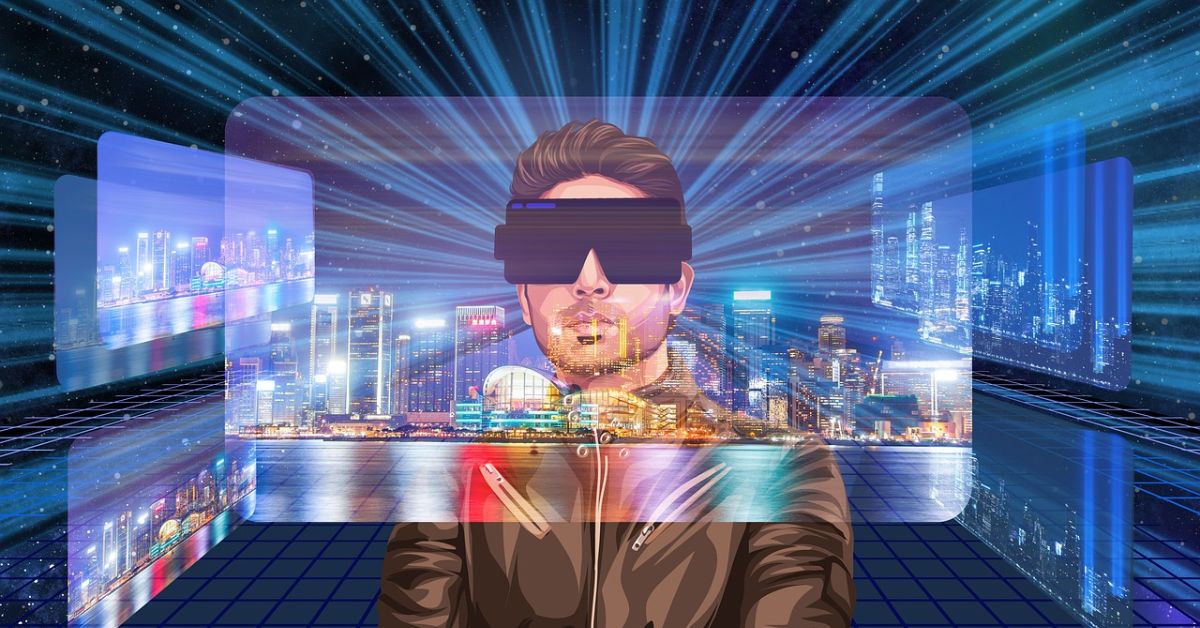Virtual reality (VR) is an exciting new technology that’s rapidly changing the way we play video games, watch videos, and communicate with one another. VR is capable of simulating almost anything you can think of: a virtual world, a video game, or even a real-world experience like watching a movie or reading a book. In this article, you’ll learn about VR and its types, as well as its potential applications. Once you finish reading this article, you’ll know everything there is to know about playing VR games and experiencing virtual reality from a whole new perspective.
What is Virtual Reality?
Virtual reality is a technology that simulates a complete digital world around you, in your head. When you put on a VR headset, you’re actually inside of a computer simulation, where you can see and hear what the characters in the simulation are experiencing. Virtual reality is a more advanced form of computer graphics than 2D graphics, so it’s more accurate, lifelike, and immersive. It can even let you “feel” where you are in the virtual world, and what it’s like to be there.
Types of Virtual Reality
There are many different types of virtual reality. Some of the more common ones include: Augmented Reality: In this type of virtual reality, you equip a VR headset with sensors to track your physical movements and detect what you’re seeing, such as traffic lights, a building, and coffee beans. The computer recreates all of this data in your VR headset, adding extra details that make you feel as though you’re actually there.
You can interact with this type of virtual reality by having your VR headset “read” the world around you, such as by telling you where to go next in a city or show you a photo while you drink your morning coffee.
Virtual World: A virtual world is a fully digital space that you can visit by yourself or with a friend. Many virtual worlds are based on existing online games, but there are many different virtual world models, such as: Stationary: In a stationary virtual reality, you’re completely immobile, like you’re sitting at home, and the computer is recreating a virtual environment exactly as you would see it in your head.
Rigid: In this type of virtual reality, you’re inside of a three-dimensional space, like you’re standing in a room or walking outside. It’s the most immersive type of virtual reality, and the most expensive to create.
Potential Applications of Virtual Reality
VR has the potential to be used for many different applications. Here are a few of the most common ones: Training: VR training is used to help people with disabilities learn new skills, likeimmune to motion sickness, physical or sensory-based learning, and rehabilitation. Education: VR could be used to help students learn how to code or teach them how to tell time by using various VR devices.
It could also be used to help people with autism program computers or control immersive visual-only virtual reality systems like those used in rehabilitation. Entertainment: VR can be used as a way to watch TV, listen to music, play games, or view videos. It could also be used as a way to relax or decompress after a hard day’s work.
How to Play VR Games Before you can experience virtual reality, you’ll need a computer and a VR headset. You can purchase both equipment at a computer store or online. There are many different types of VR headsets, including the following: Open-source VR Headsets: These are the least expensive and least reliable types of VR headsets, and they often have issues with sound and tracking.
Conservtive VR Headsets: These are the most expensive types of VR headsets, and they usually feature the best hardware and the best software. They’re the ones most often used by professional VR players. Conditional VR Headsets: These are the ones that let you play VR games only if you pay for them. They have a smartphone app that lets you set rules for when and how you can play virtual reality games.
The Future of Virtual Reality
VR is still in its infancy, and there’s a lot of potential for it to go places and change the way we interact with the digital world. Already, designers are exploring new uses for VR in education and healthcare, and new industries are opening up to the capabilities of VR, including the travel and food industries, which are just starting to incorporate VR into their communication strategy.
Summary
Virtual reality is a fast-approaching reality that will likely change the way we interact with the digital world. It empowers individuals with physical and neurological impairments to experience the full, immersive digital world. It can also be used to enhance gaming and watching videos.
Article Code: BD221EEE




